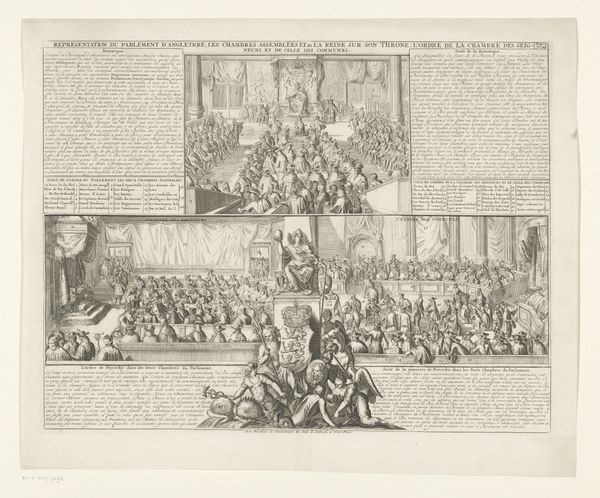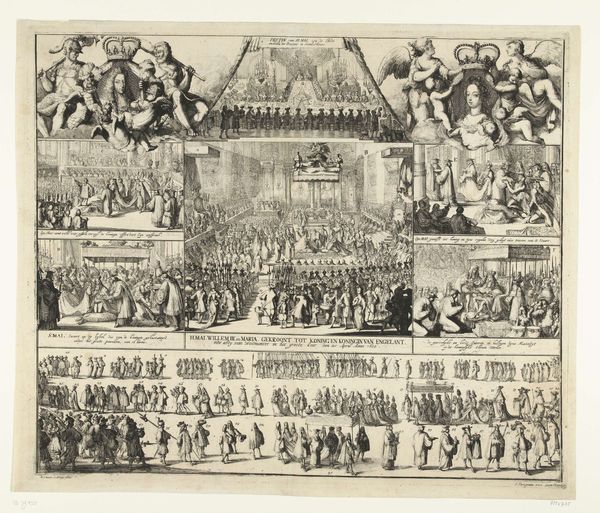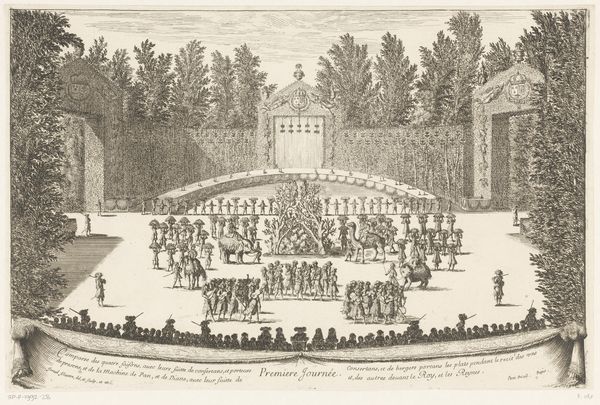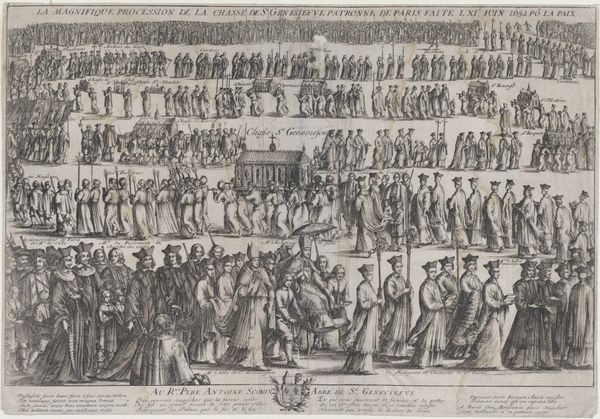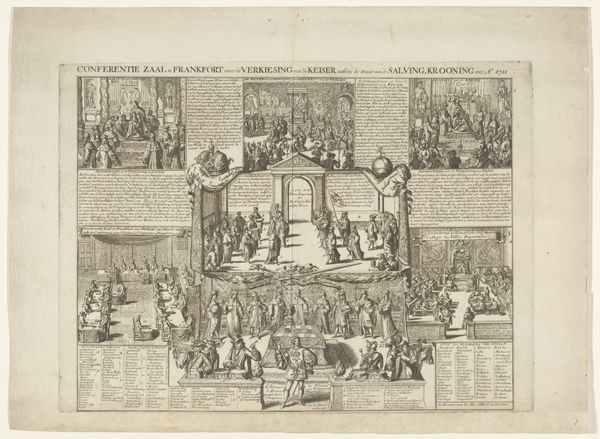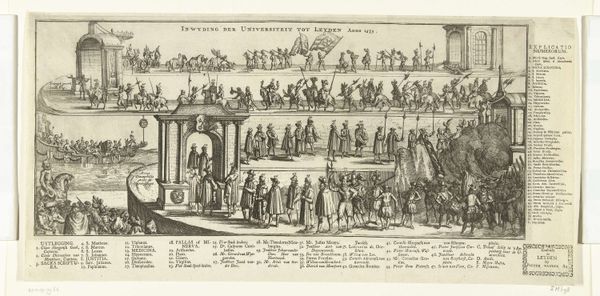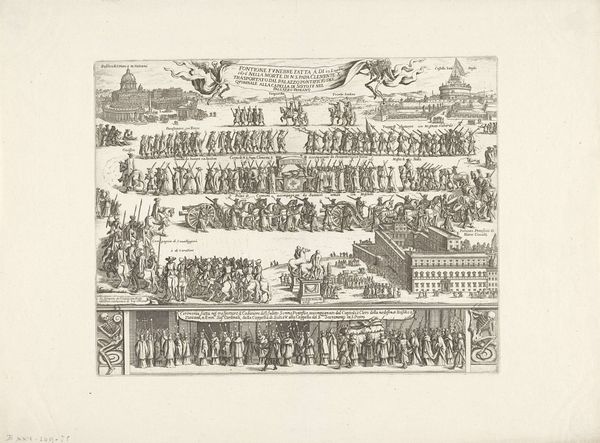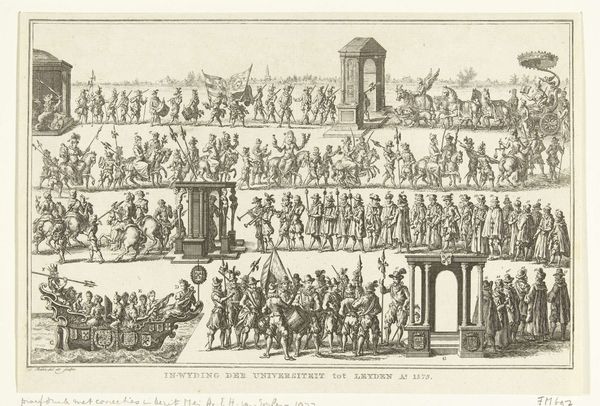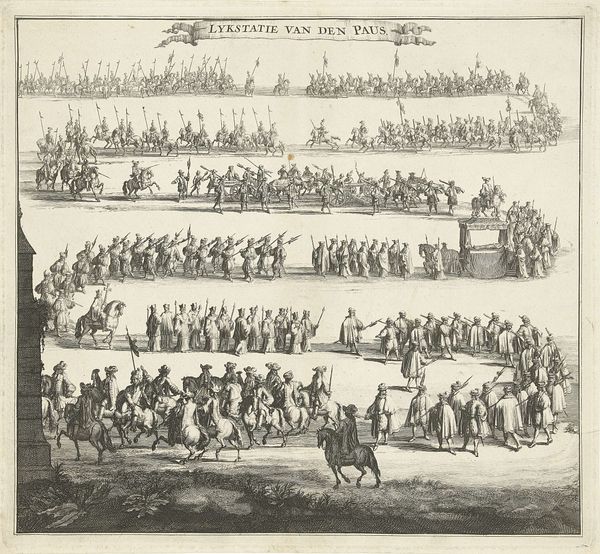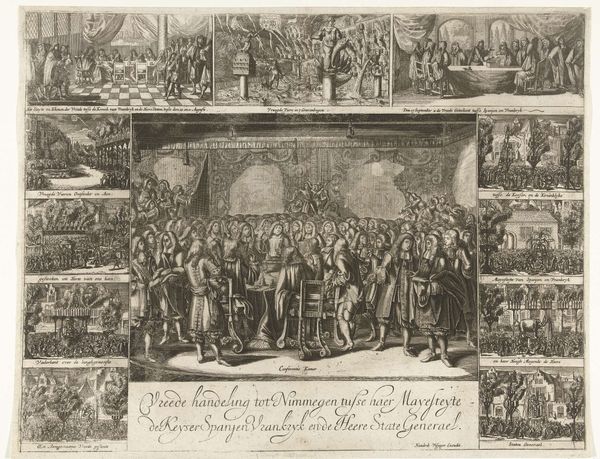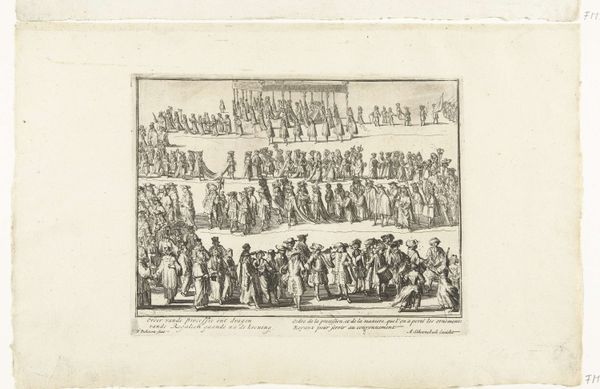
print, etching, engraving
#
portrait
#
medieval
#
narrative-art
# print
#
etching
#
cityscape
#
history-painting
#
engraving
Dimensions: height 358 mm, width 464 mm
Copyright: Rijks Museum: Open Domain
Curator: So, we're looking at a fascinating print titled "Het Schotse parlement, 1708," an etching and engraving of the Scottish Parliament sometime between 1706 and 1708. It resides here at the Rijksmuseum. What strikes you first about it? Editor: It’s almost diagrammatic, isn't it? Like a visual flowchart of power. All those tiny figures... you almost want to count them! I get a sense of... well, tightly controlled chaos, somehow. A performance of order. Curator: I see that completely. This isn't just a portrait of a room; it's about process. Consider the work involved—etching and engraving like this demand tremendous labor, skill, and time to produce these precise lines, and they have a political dimension too as prints can be easily copied. Editor: Absolutely, and it does give it a weight, an authority. Each scratch in the metal plate meticulously places people into their roles in these turbulent and important historic events. Thinking about the materials, how did prints like these become so essential for disseminating political ideas at the time? It is, as you mentioned, mass produced and portable; who could get a hold of these? Curator: That’s the interesting paradox—its mass reproduction allowed ideas to be disseminated on a larger scale, making the image a sort of propaganda piece as much as historical record, thus playing with perceptions of nationhood, power, and representation. The image offers a controlled, carefully curated view of power. Editor: Right. And isn’t that still the case, really? Even now, representations—visual, written—mediate how we understand institutions, policies. What would this print 'mean' for various groups? Curator: For me, that leads us to the ultimate question—what meaning will people derive from it in the future, after we've turned to dust? And will our interpretation matter at all then? Editor: Well said. This glimpse into Scotland's past encourages a good look at our own reflection in its visual echoes.
Comments
No comments
Be the first to comment and join the conversation on the ultimate creative platform.

